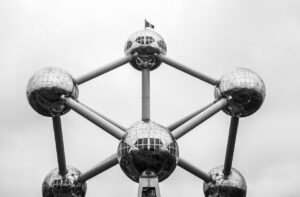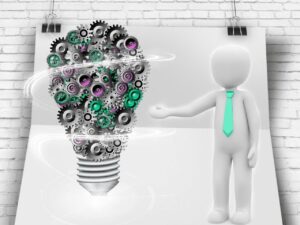
EU-funded projects operate in a highly complex environment characterised by strict compliance requirements, diverse multinational partnerships, and the imperative to align with EU policy objectives. Managing such projects is a challenge that goes far beyond fulfilling administrative obligations. To navigate this landscape effectively, the PM² methodology—developed by the European Commission—offers a robust framework for project management tailored specifically to EU-funded initiatives. By addressing governance, lifecycle management, processes, artefacts, and mindsets, PM² enables organisations to deliver impactful results while maintaining compliance and fostering collaboration.
 The Value of PM² in EU-Funded Projects
The Value of PM² in EU-Funded Projects
One of the standout features of PM² is its structured governance model. EU-funded projects often involve consortia with partners from different industries, cultures, and countries, each bringing varied approaches to project management. Without clear governance, decision-making can become slow, inefficient, and conflict-prone. PM² introduces well-defined roles and responsibilities, supported by the RASCI model, ensuring accountability and clarity. “The governance in PM² is invaluable for EU-funded projects,” says Nicos Kourounakis, author of the methodology, “because it brings structure to an environment where the most common framework is no framework at all.”
The methodology’s governance approach also addresses common pitfalls in EU-funded projects, such as the conflation of roles like scientific coordination, administrative coordination, and project management. By separating these responsibilities, PM² ensures that each domain receives the expertise and attention it deserves, leading to more balanced and effective project execution. The methodology also highlights the importance of clear role definitions within consortia, reducing overlaps, filling gaps, and enhancing accountability—a common challenge in multinational partnerships.
Another key strength lies in PM²’s phased approach to the project lifecycle. By dividing the project into four distinct phases—Initiating, Planning, Executing, and Closing—PM² ensures that teams focus on the right activities at the right time. This structure is particularly valuable for the often-overlooked Closing Phase. Proper closure, as Kourounakis points out, is critical: “Imagine the poor people who, years after the project ends, have to scramble to find documentation and remember decisions during an audit. Closing well is a burden, but it’s also an investment in your organisation’s maturity and readiness for the future.”
EU-funded projects often suffer from an imbalance between grant administration and true project management. While efficient grant administration is essential for compliance, it does not guarantee the successful delivery of project objectives. PM² bridges this gap by reintroducing fundamental project management practices. This includes robust risk management processes, which are crucial in EU-funded environments where technological, partnership, and legal risks are prevalent. By using tools like the Risk Log and applying PM²’s structured risk management approach, project teams can proactively identify, assess, and mitigate potential issues.
Fostering Collaboration and Mindsets
A unique feature of PM² is its emphasis on mindsets—behaviours and attitudes that promote effective collaboration and project success. In EU-funded consortia, partners often prioritise their organisational interests over the collective goals of the project, leading to fragmented efforts. PM² encourages project teams to adopt shared accountability, effective communication, and a focus on outcomes over outputs. This cultural shift is vital for creating genuine project teams rather than loosely coordinated groups.
Collaboration in EU-funded projects often suffers due to misconceptions, such as the assumption that all partners are equally committed or understand the project objectives uniformly. PM² addresses these challenges by promoting transparency through tools like the Project Handbook and Decision Logs, which standardise communication and expectations across the consortium. As Kourounakis notes, “The templates and artefacts are invaluable. They aren’t just documents; they’re tools that guide teams and ensure the project’s integrity from start to finish.”
Mindsets for Long-Term Success
PM²’s emphasis on outcomes rather than outputs ensures that projects do not simply deliver what is promised but also create lasting value. This is particularly important in the context of sustainability—a key priority in EU-funded projects. PM² encourages teams to embed sustainability objectives in their scope, adopt sustainable practices in project management, and ensure that outputs lead to long-term benefits. These principles align with EU-wide initiatives like the European Green Deal and the United Nations Sustainable Development Goals, amplifying the impact of projects beyond their immediate goals.
The methodology’s focus on mindsets also extends to fostering trust and collaboration within consortia. Kourounakis highlights the importance of creating genuine project teams: “We often work with groups of people pretending to be a team, but we’re not. Moving in the direction of creating a project team out of this consortium is useful, creating a team spirit.” By promoting ethical behaviour, inclusivity, and shared responsibility, PM² helps transform disparate groups into cohesive teams capable of achieving ambitious objectives.
Looking Ahead
 The future of PM² in EU-funded projects looks promising. With initiatives like the PM² Alliance promoting its adoption, the methodology is uniquely positioned to become a European standard. Its structured approach to governance, processes, and artefacts, combined with its emphasis on mindsets and outcomes, makes it an invaluable tool for managing the complexities of EU-funded initiatives.
The future of PM² in EU-funded projects looks promising. With initiatives like the PM² Alliance promoting its adoption, the methodology is uniquely positioned to become a European standard. Its structured approach to governance, processes, and artefacts, combined with its emphasis on mindsets and outcomes, makes it an invaluable tool for managing the complexities of EU-funded initiatives.
PM² is more than a methodology; it is a cultural shift that empowers project teams to navigate the unique challenges of EU-funded projects. By embracing its principles, organisations can go beyond compliance, fostering innovation, collaboration, and sustainability while creating meaningful and lasting impact. As Kourounakis succinctly puts it, “Better project management is not the end goal. The ultimate aim is achieving outcomes and delivering future benefits that align with EU priorities.”





